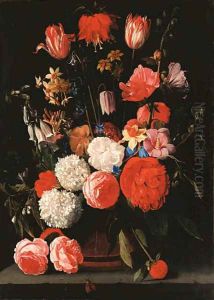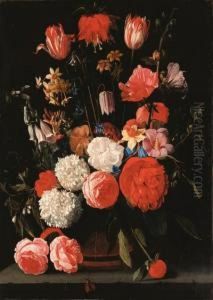Bartolome Van Winghe Paintings
Bartolomé van Winghe, born in 1599, was a Flemish painter known for his contributions to the Flemish Baroque painting movement, characterized by dramatic lighting, rich color, and intense emotion. While his exact birthplace is often debated, it is generally agreed that he was born into a family with a strong artistic lineage in the Southern Netherlands, which is present-day Belgium. His work was significantly influenced by the socio-political context of the Counter-Reformation, which sought to reaffirm Catholicism's dominance in Europe through arts, among other means.
Van Winghe's training and early career are shrouded in a bit of mystery, but it is believed that he was a pupil in the workshop of prominent artists of his time. His style was heavily influenced by the Italian Baroque, likely a result of travels to Italy, a common practice among artists of his era seeking inspiration and instruction. This exposure helped him develop a keen sense of composition and a preference for religious and mythological themes, which were popular among his patrons.
Throughout his career, Bartolomé van Winghe excelled in creating altarpieces and religious works for churches and monasteries, as well as portraits for wealthy patrons. His paintings are noted for their dynamic compositions, vibrant colors, and the skillful use of light and shadow, elements that would come to define the Baroque style. Despite his success, detailed records of his life remain sparse, and many of his works have been lost or were unattributed for centuries, making comprehensive studies of his oeuvre challenging.
Van Winghe's legacy, though not as well-known as some of his contemporaries, has been reassessed over time, with art historians recognizing the significance of his contributions to the development of Flemish Baroque painting. His ability to blend the grandeur of the Italian Baroque with the meticulous detail characteristic of Flemish art has earned him a place among the notable artists of his time. Bartolomé van Winghe died in 1645, leaving behind a body of work that continues to be studied and appreciated for its artistic value and historical significance.

